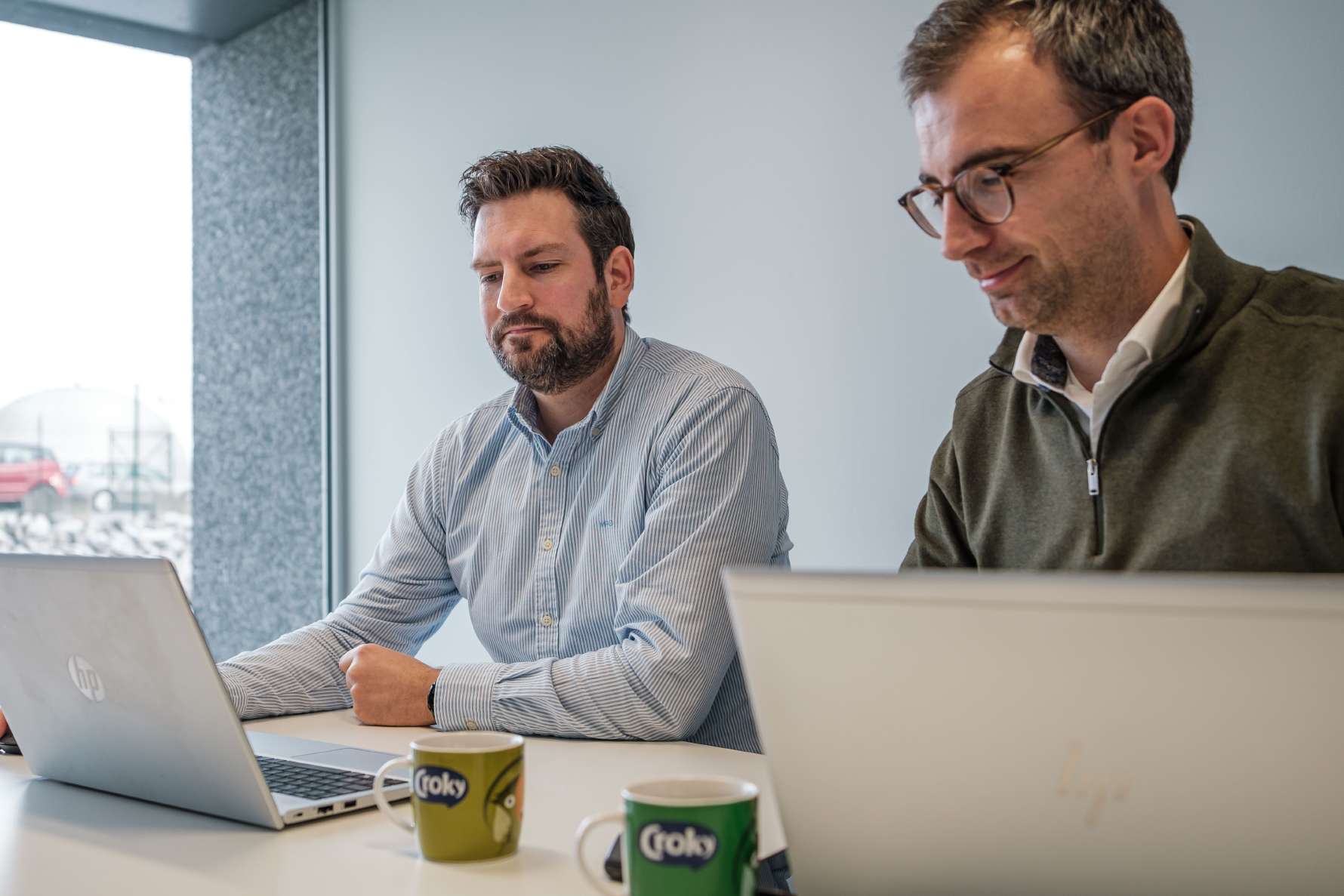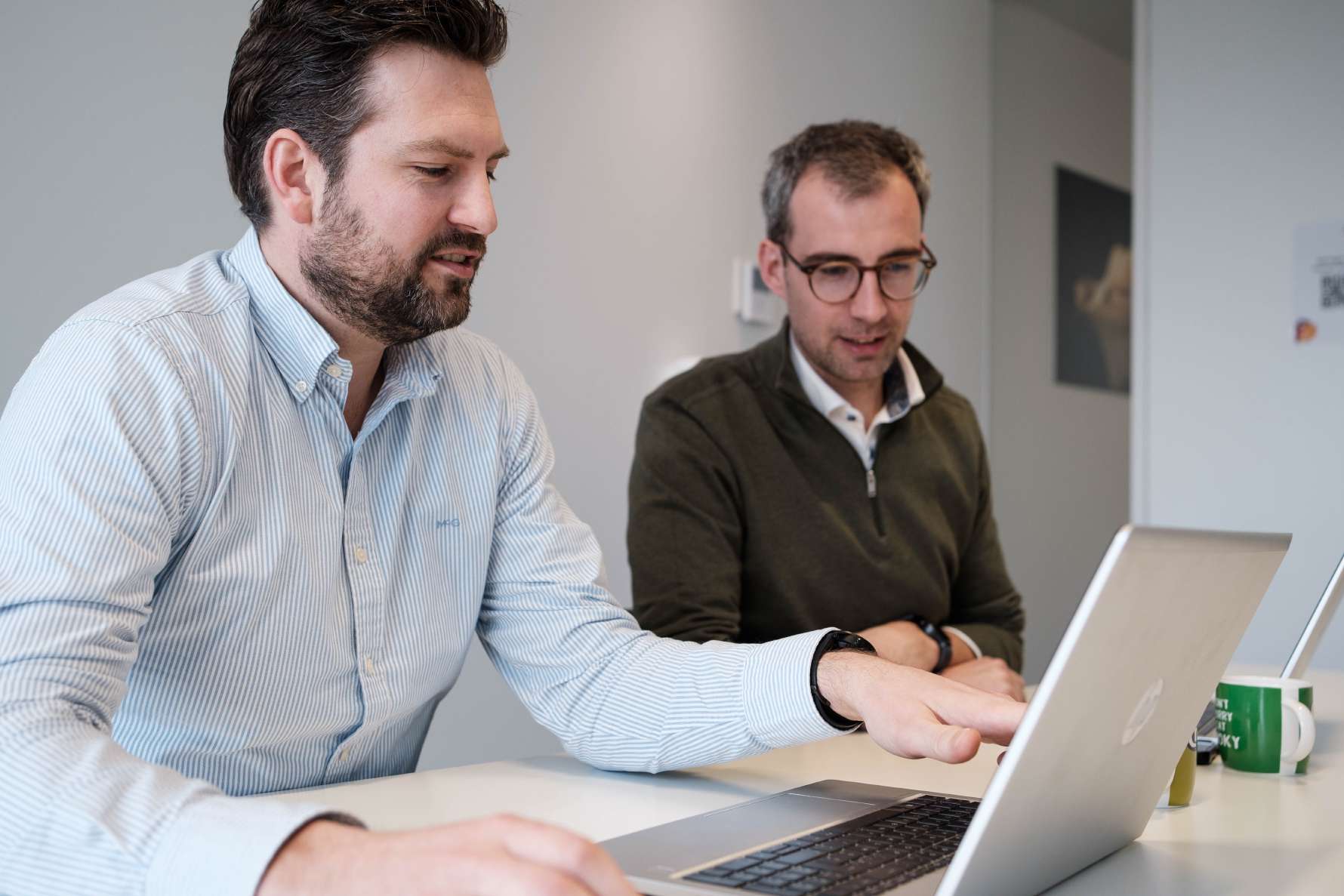Related use case
Powering operational excellence and cross-site data insights at food industry leader Roger & Roger
Frederik Van Leeckwyck on , updated
Five years ago, food producer Roger & Roger implemented Factry Historian and FactryOS in its Belgian production site, followed by a company-wide rollout. IT Director Koen Van Ceulebroeck and Business Analyst Manufacturing Jan-Laurens Vandermeersch reflect on their digital transformation journey, looking back at the opportunities seized, and the challenges still ahead.

Roger & Roger stands as a kingpin in the world of potato chips and snacks, delighting millions of couch crunchers across Europe and beyond. In 2019, they implemented Factry Historian and FactryOS at their site in Mouscron, Belgium.
Their goals: optimise production operations, reduce downtime and increase productivity through hurdle-free data visibility.
After implementation, a series of successful use cases emerged. Meanwhile, Roger & Roger’s Hungarian counterpart and sister companies Dicogel, Begro, and Westfro were gradually integrated, aiming to establish a solid data foundation across the group. Leveraging insights from the initial rollout, the site in Mouscron guides the way for other sites in their transformation journey.

Leading this operation is IT director Koen Van Ceulebroeck, who oversees the IT landscape, ensuring the technology stack aligns with business goals. Alongside him is Business Analyst Manufacturing and product suite owner Jan-Laurens Vandermeersch, who plays a key role in bridging the gap between the IT, business, and OT layer – supported by a well-equipped engineering team.
I’ve recommended Factry software to others on various occasions, therefore I’m giving a 10/10 satisfaction score. I think it’s hard to beat in terms of flexibility, speed and cost-effectiveness.
Jan-Laurens Vandermeersch
Business Analyst Manufacturing at Roger & Roger
Koen: “Our decision to go with Factry Historian was driven by a desire for flexibility and self-sufficiency. We needed a solution tailored to our specific needs, without the overhead of large, complex systems. One that our own teams could manage without needing external support — essentially, the equivalent of a Swiss army knife. Factry software offered us just that.”
“In its early stages, Factry didn’t have the references list it has today. So we have set up a PoC. Established vendors were hitting us with per-user, per-tag licensing models. With Factry it was simply, ‘Here’s the installation, now make the most of it,’ allowing for unlimited usage without artificial constraints. Afterwards, we couldn’t even imagine working without it. Smart move!”
We needed a historian solution our own teams could manage without needing external support — essentially, the equivalent of a Swiss army knife. Factry software offered us just that.
Koen Van Ceulebroeck
IT Director at Roger & Roger
Koen: “Many sites within the group have different operational processes, and are at varying digital maturity levels. Our strategy aims to standardise naming and data management across the company. In the longer term, we aim to benchmark performances, and enable every site to leverage the solution’s full potential, allowing them to exchange best practices, and learn from each other.”
“Currently, we are focusing on building a standardised data layer, and automating mutual processes such as packaging. This even involves scaling back at some of the more advanced locations to focus on the essentials and bringing the basics up to par with others. Ultimately, we’re aiming to elevate every production site collectively, and have them learn from each other”.
Jan-Laurens: “Another crucial factor is business analysis. Enriched data from Factry Historian, aggregated through the Event Module, is leveraged in BI dashboards. For instance, we capture a lot of data from our machines, such as energy consumption and production events, which we then use in relational dashboards.”
“Using historian data, we can monitor energy consumption and machine events in more detailed increments, such as per quarter for overall trends and daily for specific metrics. This is particularly useful as we start to expand these practices to electrical consumption in vegetable processing.”
Factry software enables us to be our own integrator on new sites. I can’t think of many other tools that empower you to do that, with such proficiency and effectiveness, and a low-barrier entry
Koen Van Ceulebroeck
IT Director at Roger & Roger
Koen: “Being able to analyse processes better, and discover trends, has catalysed a mind shift. Previously, when faced with an increase in demand by 20%, our instinct would have told us to purchase new machinery. Factry tools have revealed that the key often lies not in acquiring more equipment but in optimising our existing processes. This has led to considerable cost savings.”
Jan-Laurens: “We’re achieving more with the resources we already have, which translates into pure profit. Enhanced data visualisation has fundamentally changed how we operate, resulting in, for instance, reduced unplanned downtime. Specifically, through improved oversight and faster response times to issues, we’ve significantly cut down changeover times. This is most evident in the efficiency with which we now swap rolls on our packaging machines.”
Jan-Laurens: “Through dashboards, operators are able to see an overview of the entire production line, along with KPIs, and easily make adjustments as needed. For plant and operations managers, these screens serve as valuable tools for making data-driven decisions. It has shifted us away from relying on gut feelings and makeshift Excel sheets to having real, actionable visibility.”
Koen: “Finally, it allows us to scale to new sites in a cost-effective way, and monitor them remotely. The integration of our factory in Hungary is a standout example. Being a greenfield site, it allowed us to meticulously choose which tags to monitor from the outset. Armed with insights from our initial rollout, we could embed an effective data model and reporting system from the start.”
“A concise set of dashboards presenting real-time data now enables managers across the group to follow up on the plant’s performance at a glance. Without Factry Historian, I’m not sure how we would have made this possible.”
When faced with a production increase, Factry tools have revealed that the key often lies not in buying more machines but in optimising existing processes. This has led to considerable cost savings.
Koen Van Ceulebroeck
IT Director at Roger & Roger

Koen: “Working with Factry has always been a down-to-earth and hands-on experience, marked by strong collaboration. In the loop with the latest technologies, from integrating MQTT collectors to leveraging Seeq, the team is on top of their game. To me, what stands out is their discernment in navigating these trends, recognising which to adopt and which might be fleeting.”
Koen: “COO Yves has always been our go-to-guy before, during and after the initial implementation process. At the same time, as the Factry team grows, we notice that project ownership is distributed more broadly among other team members as well. This shift is refreshing, especially in an IT landscape where all too often, projects bottleneck at a single, indispensable individual.”
Jan-Laurens: “Personally, I have already recommended Factry to other companies on various occasions, therefore I’m giving a 10/10 score. Honestly, having once been a consultant in IT and MES implementation projects with similar functionality, I think Factry’s solutions are hard to beat in terms of flexibility, speed and cost-effectiveness. Competitors should be wary.”
Koen: “I agree. In my opinion, Factry Historian truly shines by letting us quickly address business queries and integrate data sources on our own, while almost never needing support. Additionally, we’ve seen our business department staff creating numerous purpose-specific dashboards. This autonomy not only serves their needs but also significantly lightens our IT department’s workload.”
“Factry software has basically enabled us to become our own integrator, collaborating directly with sites to understand their needs, discussing technical requirements, setting up the system, developing dashboards, and providing training. I can’t think of many other tools that empower you to do that, with such proficiency and effectiveness, and a low-barrier entry.”

Koen: “If I were to advise a company at the same starting point we were in 2019, I’d say start with the basics and keep it simple. Carefully plan your data structure and syntax from day one. Begin small, but always design with the capacity to scale up in mind. And make sure the dashboards are immediately helpful to people, as this will foster easier buy-in on the production floor.”
Jan-Laurens: “Really, less is more. When creating dashboards, focus on what’s essential. A dashboard should serve one clear purpose, offering straightforward insights without overcomplication. This approach not only makes implementation smoother, but also ensures that your team can easily adopt and use the system. And that’s how implementation success is measured.”
Collect, analyse and report process data with ease